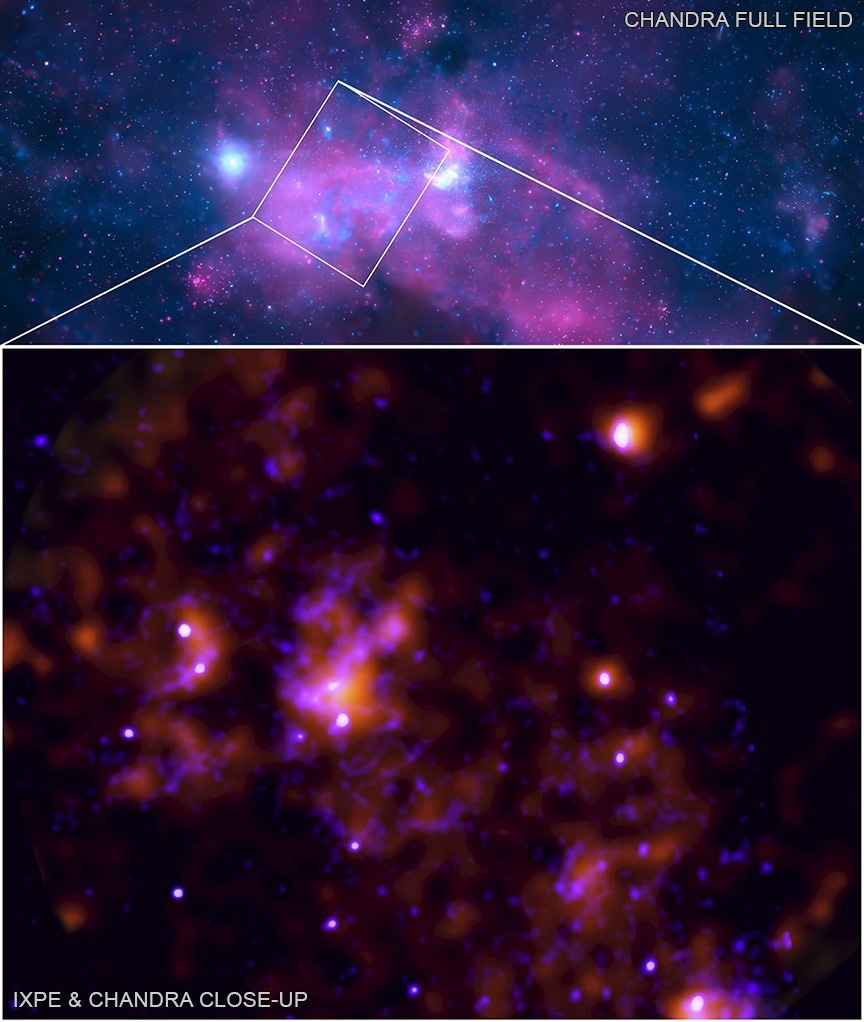An international research group has found that Sagittarius A (Sgr A), known to be the supermassive black hole present at the center of the Milky Way, arose from a long period of dormancy about 20 decades ago.

New data from NASA’s Imaging X-ray Polarimetry Explorer (IXPE) has provided evidence that the supermassive black hole at the center of the Milky Way Galaxy- known as Sagittarius A (Sgr A) - went through a very intense period of activity some 200 years ago after gobbling up gas and dust that came within its range. The IXPE data, which shows the echo of this past activity, can be seen in orange in the bottom image. It was combined with data from Chandra, another NASA X-ray observatory, seen in blue, which shows only direct light from the Galactic center. The top image is a much wider view of the center of the Milky Way obtained by Chandra. Image Credit: NASA/CXC/SAO/IXPE
The group was headed by Frédéric Marin, a CNRS scientist at the Astronomical Strasbourg Observatory (CNRS/University of Strasbourg), who has disclosed the past awakening of this mass object, which is around four million times highly massive compared to the Sun.
Their study was reported in the journal Nature on June 21st, 2023.
At the beginning of the 19th century, for one year, the black hole swallowed up cosmic objects that got a little too close to it, before entering a state of dormancy once again.
The Earth did not witness any effect, as the distance between Sgr A and the planet is too great (around two billion times the distance from the Earth to the Sun). But, the X-Ray echo detected, which was emitted around 20 decades ago, shows that the original intensity was at least a million times greater compared to that now emitted by Sgr A.
To gain a better insight into the increase in the intensity of the X-Ray emission and also when the black hole emerged from its quiescent state, it is as if a single glow-worm hidden in a forest abruptly turned out to be as bright as the Sun.
Such findings describe why galactic molecular clouds next to the Sgr A are shining more brightly compared to usual: they are reflecting the X-Rays that have are emitted by Sgr A 20 decades ago.
For their study to be performed, the researchers utilized NASA’s IXPE (Imaging X-Ray Polarimetry Explorer) satellite, which was, for the very first time, able to detect the polarization of this X-Ray light with great accuracy and also identify its source. This is something that had previously proved impossible.
Instead, like a compass, the polarized X-Ray light points instantly to its source, Sgr A, even though the latter is virtually extinct at present. The researchers are continuing their work on Sgr A to try to identify the physical mechanisms that are needed for a black hole to switch from a quiescent state to an active one.
Journal Reference
Marin, F., et al. (2023) X-Ray polarization evidence for a 200-year-old flare of Sgr A. Nature. doi.org/10.1038/s41586-023-06064-x.